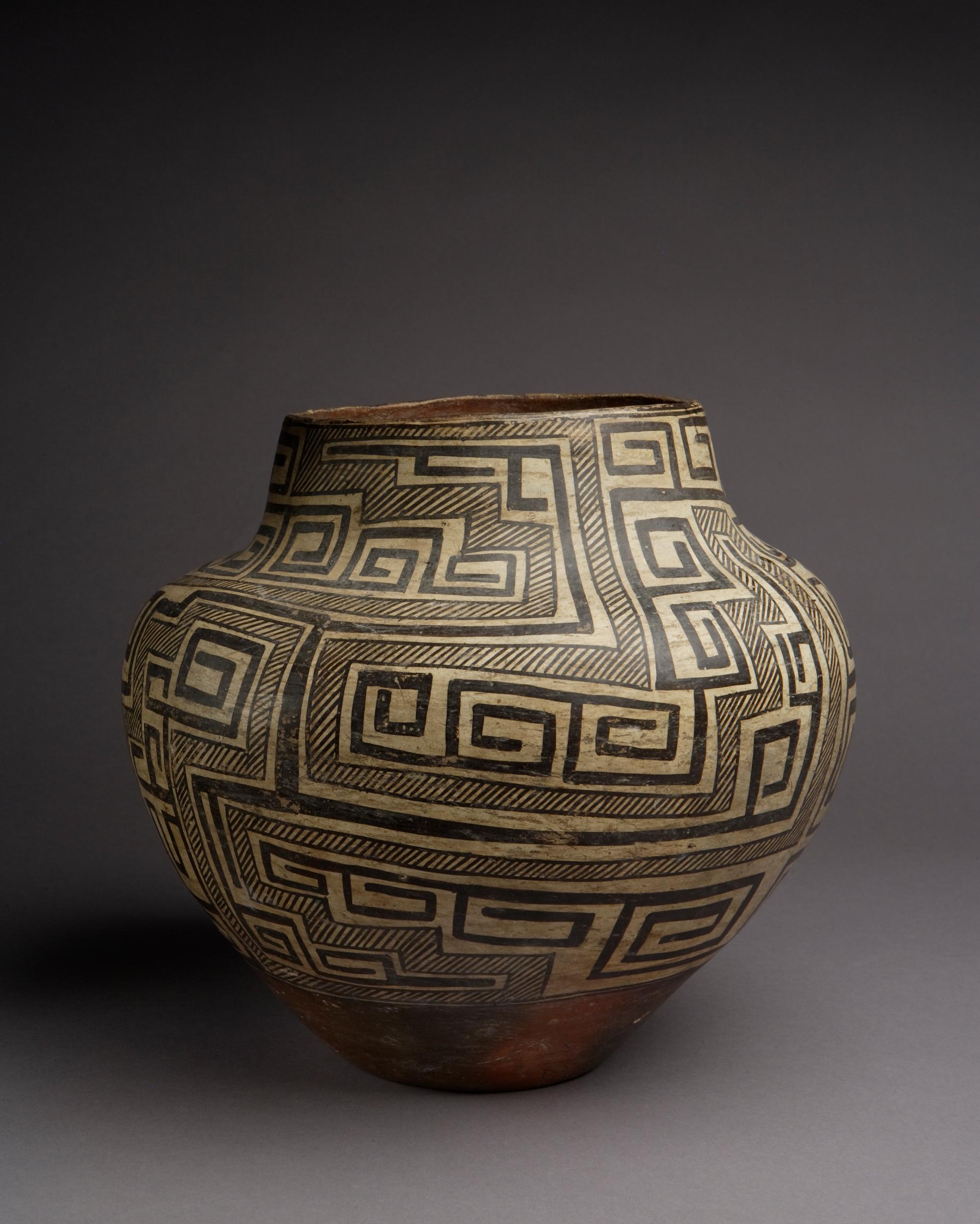
Photograph by Addison Doty. Copyright 2011 School for Advanced Research.
Water jar
Date: c. 1910-1920
Artist or Maker: Unknown
Dimensions:
Dimensions: 27.9 × 30.5 cm (11 × 12 in.)
Weight: 2.7 kg (5.9 lb.)
Medium: clay | paints
Credit Line: Indian Arts Fund purchase for the permanent collection, 1927.
Place Made:
Valencia, Cibola, Bernalillo, and Sandoval Counties, New Mexico, Southwest, United States, North America
Object Number: IAF.772
Not on view
Tribal Collection Review RemarksAccording to the participants in the Acoma collection review visit September 4, 2015 (Events Record “Collection Review: Acoma Pueblo, Review 3”): This jar was made with a lot of pottery sherd temper. The design seems to be added on as the artist worked. There does not appear to be any set pattern number or arrangement but could be a variation of the Tularosa swirl design. The interior rim and base are the same red. The red slip on the base is polished. There are few pits on this jar which indicates the clay and temper were well processed. This jar was also made around the time potters started using screens to sift the clay and temper, producing more finely ground clay. This could have contributed to the there being less pitting as the impurities are broken down more. There is a hole near the base. There are line breaks in the bottom framing lines.
Ambrosio Salazar, the seller, was a local Hispanic trader in San Fidel, NM.
According to the participants in the Acoma collection review visit February 26-27, 2019 (Events Record “Collection Review: Acoma Pueblo Review 12”): The shape of a water jar is characterized by usually having a concave base (can also have a flat base) leading to a wider body and shoulder area. The shoulder, which is typically rounded but can also be sharp, leads inward and up to the neck and opening of the water jar. Historic water jars will sometimes have an indentation from the base the pot was built on (also known as a puki).
Water jars of all sizes are made and used. Medium to small size water jars are more commonly used to carry water as the weight of a filled water jar can become quite heavy. Large sized water jars would be used for storing water. Today at Acoma, water jars are still being used and made in both traditional natural and commercial materials.
In Collection(s)
The Indian Arts Research Center, in collaboration with Native American community scholars, strives to present accurate collections records. Records may be updated as new information becomes available and is reviewed with the Native American community having cultural affinity to particular items. Please write to iarc@sarsf.org if you have questions or concerns related to the documentation.
